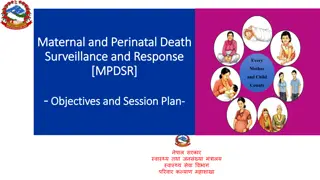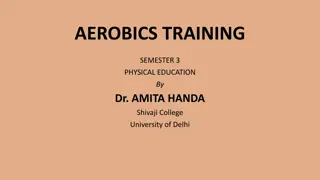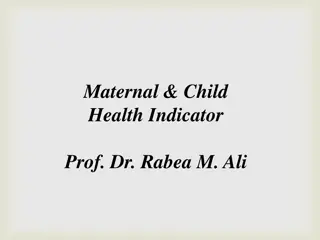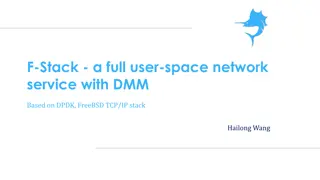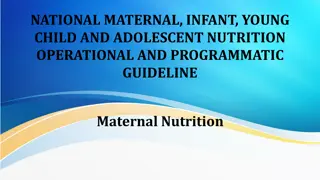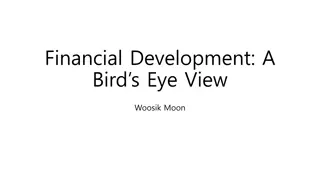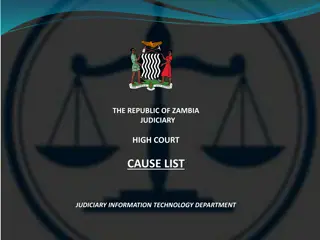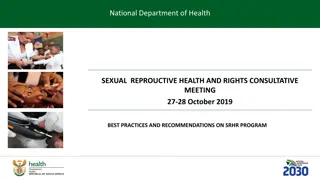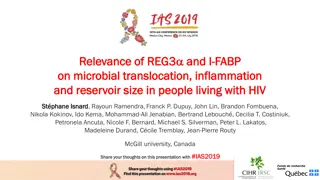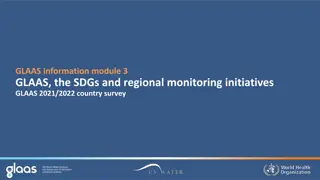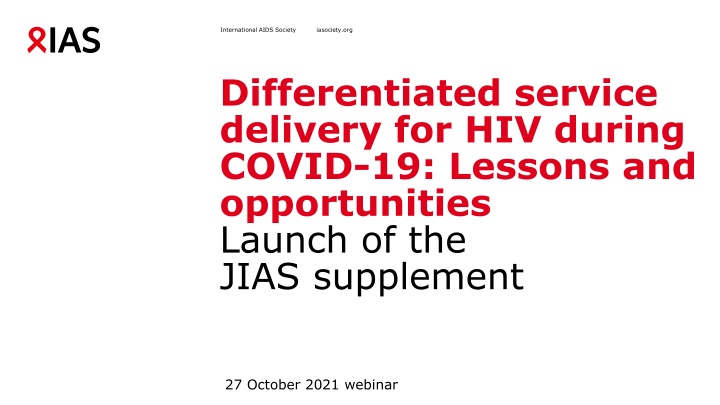
Differentiated Service Delivery for HIV Treatment During COVID-19 in Zambia
Explore how Zambia adapted HIV treatment through differentiated service delivery models during the COVID-19 pandemic based on national electronic medical records data. The study evaluates changes in DSD coverage and ART dispensing intervals, emphasizing the importance of remote care. Join the discussion on enhancing healthcare delivery amidst global health crises.
Download Presentation

Please find below an Image/Link to download the presentation.
The content on the website is provided AS IS for your information and personal use only. It may not be sold, licensed, or shared on other websites without obtaining consent from the author. If you encounter any issues during the download, it is possible that the publisher has removed the file from their server.
You are allowed to download the files provided on this website for personal or commercial use, subject to the condition that they are used lawfully. All files are the property of their respective owners.
The content on the website is provided AS IS for your information and personal use only. It may not be sold, licensed, or shared on other websites without obtaining consent from the author.
E N D
Presentation Transcript
International AIDS Society iasociety.org Differentiated service delivery for HIV during COVID-19: Lessons and opportunities Launch of the JIAS supplement 27 October 2021 webinar
International AIDS Society iasociety.org Changes in utilization of DSD for HIV treatment during COVID-19 in Zambia Youngji Jo Boston University Boston, USA Youngji.Jo@bmc.org Bevis Phiri Clinton Health Access Initiative Lusaka, Zambia bphiri@clintonhealthaccess.org AMBIT project On behalf of: Youngji Jo, Sydney Rosen, Karla Therese L Sy , Bevis Phiri, Amy Huber, Muya Mwansa, Hilda Shakwelele, Prudence Haimbe, Mpande M Mwenechanya, Priscilla Lumano Mulenga, and Brooke E Nichols Acknowledgements to the Bill & Melinda Gates Foundation and Zambia Ministry of Health
Background The onset of the COVID-19 pandemic in early 2020 increased the importance of differentiated service delivery for HIV treatment patients, as DSD models can minimize the need for in-person interaction between patients and providers. In March 2020, the Zambian Ministry of Health urgently promoted the expansion of 3- and 6- multi-month dispensing for patients on antiretroviral treatment (ART). We used national electronic medical record data to chart the expansion of DSD model participation during the pandemic. AIM: Evaluate the extent to which DSD coverage and ART dispensing intervals changed during the first year of the COVID-19 pandemic in Zambia
Methodology Data source: 266,580 patient data from SmartCare, Zambia s electronic medical record system, for 791 health facilities (across 93 districts and 10 Provinces) representing about 3/4 of all ART patients nationally. Time period: January 2019 to November 2020 Analysis: To assess the rate of increase of the cumulative numbers of patients enrolled in DSD models before/after March 2020 using interrupted time series analyses DSD models included: Fast track (1-2 month refills, 3 month refills, 4-6 month refills) Multi-month dispensing (MMD) (3 months or 4-6 months) Community adherence group (CAG) Home ART delivery Other (before/after hours and weekend clinics, community pharmacy, health post, scholar, rural/urban adherence groups, mobile ART distribution)
Methodology (2) We compared the change in slope between the cumulative number of clients enrolled in DSD before and after March 1st, 2020. Segmented regression model: ??? _?=?_0+ ?_1 ????+ ?_2 ????? _?+ ?_3 ???? ????? _? time is in months covid is a dummy variable indicating whether the current time is pre- or post-covid. DSD (outcome) is the cumulative number of clients enrolled in DSD at time t. ?_3 indicates the slope change following the intervention
Cumulative number of patients enrolled in DSD (2019-2020) Results 90,000 80,000 70,000 The number of patients enrolled in a DSD model gradually increased over 2019-2020 (especially MMD and fast track) While the number of patients served by the home ART delivery model is modest, it increased most rapidly during this period (240%), while participation in community adherence groups (CAGs) increased the least (18%). Proportion of patients receiving 6-month dispensing fell from 57% to 49%; proportion receiving 1, 2 or 3-month refills rose. 60,000 50,000 40,000 30,000 20,000 10,000 0 1 2 3 4 5 6 7 8 9 10 11 12 1 2 3 4 5 6 7 8 9 10 11 2019 2020 Multi-Month dispensing 4-6 months Multi-Month dispensing 3 months Fast Track 4-6 months Fast Track 3 months Fast Track 0-2 months Others Community Adherence Group Home ART
Results (2) Participation in home ART delivery, fast track 1-2 month, and multi-month dispensing for 3 months significantly increased. Participation in fast track 4-6 month and other models significantly decreased. Fast track 3 month non- significantly increased.
Strengths and limitations COVID-19 pandemic showed accelerated new participation in most DSD models o Increases were less for the 4-6-month fast-track and other models. We relied entirely on routinely collected medical record data from the SmartCare system o Covers ~three quarters of Zambia s ART facilities. This analysis does not illustrate how and why the introduction of COVID-19 resulted in different scale-up patterns by DSD models and whether and to what extent the temporal changes may differ by setting.
Conclusions Further research is needed to examine how this rapid acceleration of different DSD model uptake has affected overall initiation and retention in care of the entire ART cohort, including patients not meeting criteria for stability. Efforts to eliminate obstacles to longer dispensing intervals should be prioritized to achieve the expected benefits of DSD models and minimize COVID-19 risk. o To continue to support 6-month dispensing, a secure supply chain will remain essential. PEPFAR data -> increase in 3-6 month dispensing from 46% (Dec 2019) to 69% (June 2020) o As the government is now recommending relaxation of eligibility criteria for multi-month dispensing, evaluating the impact of this evolution in DSD guidelines will be a high priority for the coming years.



